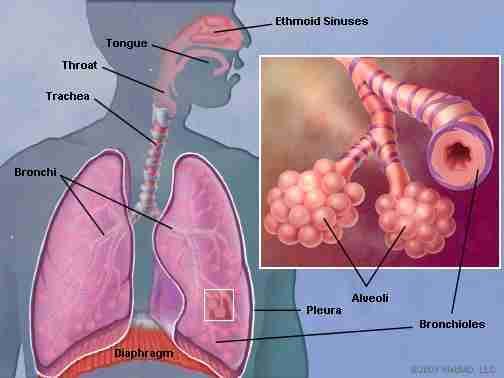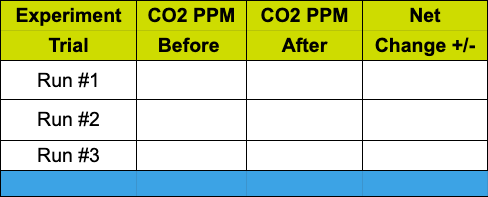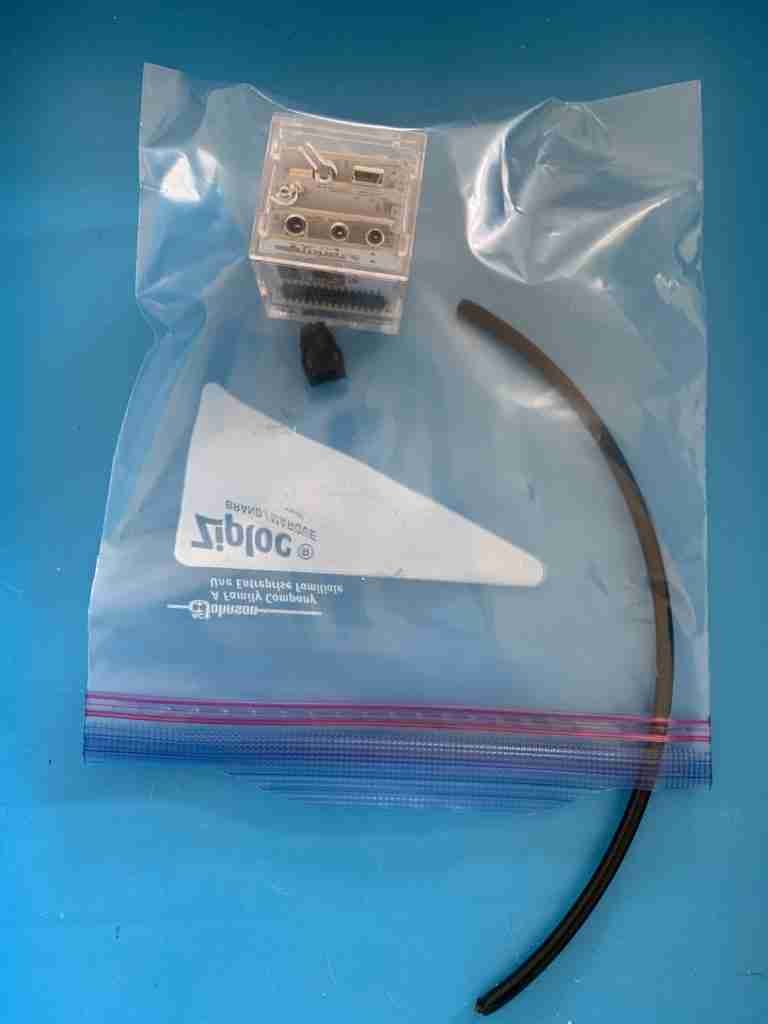Great Work!
Now that you’ve mastered PDQ 1 and 2, are you ready for a bigger bite? Next stop, the Experiment!
PDQ2 |
Grades:
Time:
Subject:
5-8
5-10 minutes
Life Science
Your respiratory system extracts oxygen from the air and expels CO2. Do you think your respiration changes when you hold your breath?
Our respiratory system is one of many systems in our body. Its basic function is to take in oxygen (O2), which we need to convert our food into energy, and it expels carbon dioxide (CO2), the waste product of our energy conversion process.
As you breathe in fresh air it delivers oxygen through your trachea and bronchial tubes to smaller pathways called bronchiole that end in tiny sacs called alveoli. It is the alveoli in your lungs where the gas exchange takes place. Oxygen is extracted from the air and the respiratory system then passes the oxygen on to the circulatory system which carries it to cells that use O2 to create energy. It is also in the alveoli that CO2 is extracted from your circulatory system and when you exhale, out it goes!
What do you think happens when you hold your breath and you stop the delivery of fresh air to the alveoli?
Let’s explore further with databot™ and find out!

By completing this experiment and conducting the scientific observations associated with it you will master the following knowledge! Good luck science explorer!
Air Pressure: The weight of the air above us pressing down. We don’t feel it normally because it is always there, but air has weight!
Alveoli: Tiny air sacs in your lungs that facilitate the exchange of oxygen into your bloodstream and carbon dioxide out of it.
Bronchial Tubes: Branch off your trachea and carry the air you inhale into your lungs.
Bronchiole: Smaller passages off your bronchial tubes that lead to the tiny air sacs known as alveoli where gas exchange takes place.
Carbon Dioxide (CO2): A colorless, odorless gas naturally present in the air you breathe and is absorbed by plants in photosynthesis. There would be no animal life or green plants without carbon dioxide. Green plants use energy from the sun plus carbon dioxide and water to produce carbohydrates and oxygen.
Diaphragm: A dome shaped muscle-membrane that separates your thorax from your abdomen. It plays a major role in breathing by contracting and changing the volume in your chest cavity which allows fresh air to rush in and deliver oxygen!
Exhale: To breathe out.
Homeostasis: Your body’s systems and processes that help maintain a balance of things like your oxygen and CO2 levels.
Inhale: To breathe in.
Lungs: Spongy organs located in your chest cavity that take in oxygen and expel carbon dioxide.
Oxygen (O2): A molecule formed of two oxygen atoms and is a major component (21%) of the air we breathe. When we breathe, we extract oxygen from the air and absorb it into our bloodstream. Our cells then use oxygen to convert food to energy!
Respiration: Facilitates the production of energy in the body through the process of breathing in oxygen and expelling carbon dioxide.
Respiratory System: Your lungs, airway, and associated muscles, are responsible for breathing – taking in oxygen and expelling carbon dioxide.
Trachea, or windpipe: A large tube that conveys air to and from your lungs. It is an important part of your respiratory system.
This is a fun and simple activity that will involve you measuring your CO2 output using databot™ in a small plastic bag. Prepare to hold your breath so you can test your CO2 level before and after! What do you think will be the result of holding your breath?
Look for these important terms that identify important parts of your respiratory system on the diagram to the right. Trace their location on your own body. You are about to give your respiratory system a workout – good luck!

Procedure


Now that you’ve mastered PDQ 1 and 2, are you ready for a bigger bite? Next stop, the Experiment!
Educator Info
Understand:
MS-LS1-3. Use argument supported by evidence for how the body is a system of interacting subsystems composed of groups of cells. (Grades 6 – 8)
Disciplinary Core Ideas
In multicellular organisms, the body is a system of multiple interacting subsystems. These subsystems are groups of cells that work together to form tissues and organs that are specialized for particular body functions.
Cross Cutting Concepts
Systems may interact with other systems; they may have sub-systems and be a part of larger complex systems.
The following questions may or may not be appropriate for the age group you are working with so use your discretion.
How We Breathe, Molly Kampf. 2018.
UC Colorado Boulder, Teach Engineering. Lesson: Breathe In, Breathe Out
Khan Academy Video: Meet the lungs
Khan Academy Video: Oxygen movement from alveoli to capillaries
Khan Academy Video: Inhaling and Exhaling
Breathe Cover Photo by Fabian Møller on Unsplash
Awesome breath-holding swimmer image by tantan1203 on Pixabay.
Lung Anatomy, Creative Commons 4.0 by Sumaiya.
 Breathe by Robert O. Grover & Team databot™ is licensed under a Creative Commons Attribution 4.0 International License. Permissions beyond the scope of this license may be available at databot.us.com/contact.
Breathe by Robert O. Grover & Team databot™ is licensed under a Creative Commons Attribution 4.0 International License. Permissions beyond the scope of this license may be available at databot.us.com/contact.